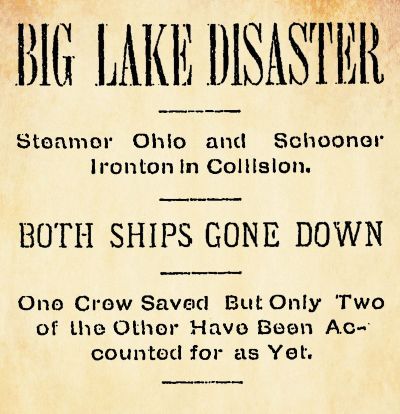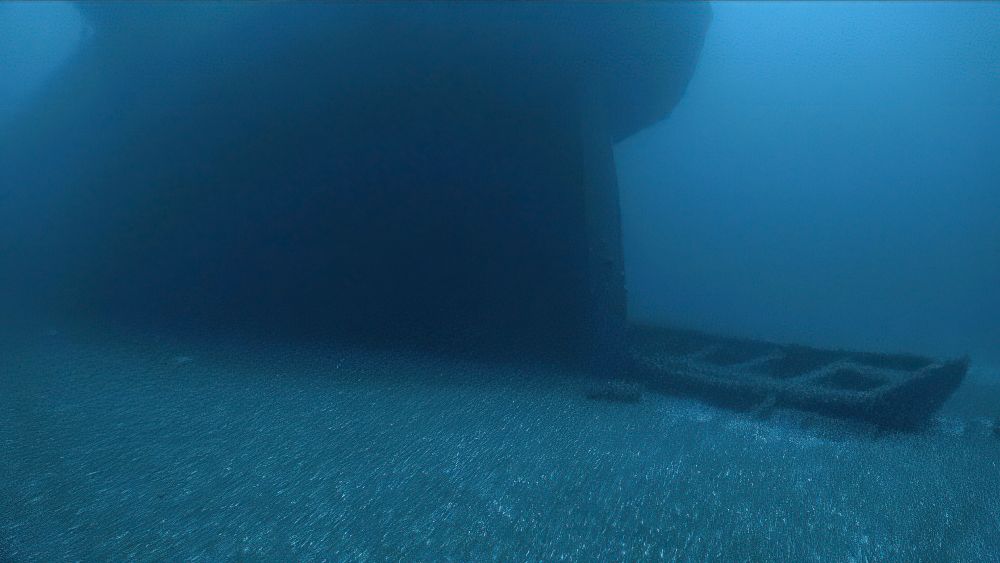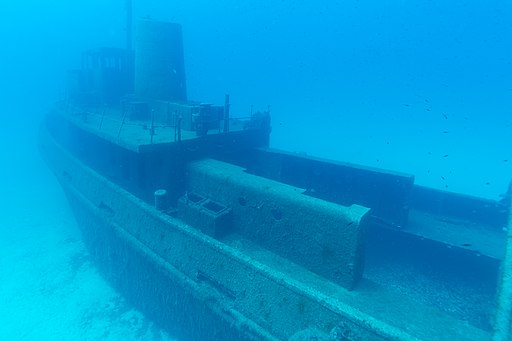Frozen in Time: National Marine Sanctuary Researchers Discover Lost Shipwreck Ironton
Posted
Last Updated
By noaa.gov
Researchers from NOAA, the state of Michigan, and Ocean Exploration Trust have discovered an intact shipwreck resting hundreds of feet below the surface of Lake Huron. Located within NOAA’s Thunder Bay National Marine Sanctuary, the shipwreck has been identified as the sailing ship Ironton. Magnificently preserved by the cold freshwater of the Great Lakes for over a century, the 191-foot Ironton rests upright with its three masts still standing.
“The discovery illustrates how we can use the past to create a better future,” said Jeff Gray, Thunder Bay National Marine Sanctuary superintendent. “Using this cutting-edge technology, we have not only located a pristine shipwreck lost for over a century, we are also learning more about one of our nation’s most important natural resources—the Great Lakes. This research will help protect Lake Huron and its rich history.”

The Sinking
In September 1894, Ironton sank in a collision that took the lives of five of the ship’s crew. Accounts from the wreck’s two survivors provide details about the loss of the vessel in “Shipwreck Alley”—an area of Lake Huron known for its treacherous waters that have claimed the lives of many sailors.
The 190-foot steamer Charles J. Kershaw departed Ashtabula, Ohio, on Lake Erie, with the schooner barges Ironton and Moonlight in tow. The vessels sailed empty, destined for Marquette, Michigan, on Lake Superior.
At 12:30 a.m. on Sept. 26, while sailing north across Lake Huron under clear skies, Kershaw’s engine failed, leaving the ship without power. A few miles north of the Presque Isle Lighthouse, a strong south wind pushed Moonlight and Ironton toward the disabled steamer. To avoid entanglement and a possible collision, Moonlight’s crew cut Ironton’s tow line, detaching the steamer from the schooner barges.
Ironton’s crew found themselves suddenly adrift in the dark and at the mercy of Lake Huron’s wind-blown seas. Under the direction of Captain Peter Girard, they fought to regain control of the ship, firing up the vessel’s auxiliary steam engine to help set the struggling ship’s sails. Despite their efforts, Ironton, propelled by the wind from astern, veered off course into the path of the southbound steamer Ohio. The 203-foot wooden freighter Ohio was headed to Ogdensburg, New York, from Duluth, Minnesota, loaded with 1,000 tons of grain.
 The ROV footage of Ironton hauntingly reveals the lifeboat still lashed to the sunken ship’s stern. A lifeboat that could have saved five men. Photo: NOAA/Undersea Vehicles Program UNCW
The ROV footage of Ironton hauntingly reveals the lifeboat still lashed to the sunken ship’s stern. A lifeboat that could have saved five men. Photo: NOAA/Undersea Vehicles Program UNCW
By the time Ironton’s crew spotted the approaching Ohio through the darkness, it was too late—a head-on collision with the steamer was unavoidable. In an interview published by the Duluth News Tribune the following day, William Wooley of Cleveland, Ohio, a surviving crew member of Ironton, recounted his experience.
At this time we sighted a steamer on our starboard bow. She came up across our bow and we struck her on the quarter about aft of the boiler house. A light was lowered over our bow and we saw a hole in our port bow and our stem splintered. (Duluth News Tribune, Sept. 27, 1894)
The two vessels separated after the impact, both fatally damaged. Ironton’s bow tore a 12-foot diameter hole into Ohio’s wooden hull. Heavily laden with cargo, Ohio sank quickly, with all 16 crew escaping on lifeboats. Nearby ships rescued the sailors. The damaged Ironton, however, drifted out of sight of the responding vessels. By the time Captain Girard realized he could not save the ship, Ironton had drifted for over an hour, far from the view of any surrounding vessels.
As the schooner barge slipped swiftly beneath the waves, Ironton’s seven-man crew retreated to their lifeboat. However, in the commotion, no one untied the “painter,” a line that secured the lifeboat to Ironton. Survivor William W. Parry of East China, Michigan, recounted:
Read more at noaa.gov

